Canon 10-18mm f/4.5-5.6 (Jeremy Sauterel)
The EF-S lens options for your Canon crop sensor DSLR are immense, from standard kit zooms to specialty primes and third-party options. To help you wade through the fray, we’ve picked the top zoom and prime EF-S lenses covering all the major categories from wide angle and portrait to telephoto. In addition to including the highest quality lens options with fast maximum apertures and premium builds, we have taken value strongly into consideration and that is reflected in our rankings. For more background information, see our detailed Canon EF-S lens comparison table and buying advice below the picks.
 Category: Travel/portrait
Category: Travel/portrait
35mm equivalent: 27.2-80mm
Weight: 19.9 oz.
What we like: Great optics for the price.
What we don’t: Autofocus and build quality aren’t quite up to Canon standards.
Leave it to Sigma to come up with a fast yet reasonably priced EF-S lens that gives Canon a serious run for its money. With a constant maximum aperture of f/2.8, this 17-50mm zoom is built to mimic the 24-70mm f/2.8 full-frame lenses that are so popular among professionals. In terms of optics, you get impressive low light performance and bokeh, great color rendition, and good center sharpness (it does fall off a bit at the corners). And at just over half the price of the Canon 17-55mm f/2.8 below and a couple ounces lighter, this is our top walk-around zoom for crop sensor cameras.
What are the downsides of going with a third-party lens like the Sigma 17-50mm f/2.8? The first is autofocus, which can be slower than Canon’s native offerings. The second is build quality, which is good but not quite up to Canon standards. These issues aside, the Sigma is a highly capable walk-around lens for EF-S and a tremendous value.
See the Sigma 17-50mm f/2.8 for Canon
 Category: Street/travel
Category: Street/travel
35mm equivalent: 38.4mm
Weight: 4.4 oz.
What we like: Low profile and solid optics.
What we don’t: Sharpness and low light performance are good but not great for a prime lens.
Pancake lenses are the best—they weigh next to nothing and make your DSLR feel, well, much less DSLR-like. In the EF-S mount, Canon’s most popular pancake is the 24mm f/2.8. Weighing a feathery 4.4 ounces and with a total length off the camera of less than 1 inch, this 38mm equivalent lens is a really nice option for travel and everyday use.
In terms of optical performance, the Canon 24mm f/2.8 is good if not great. The lens is reasonably sharp, focuses quickly for both stills and videos, and performs well in low light at f/2.8. It’s true that you can go faster and sharper with the 50mm f/1.8 below, but that lens is larger in size (it’s only slightly heavier) and not quite as versatile of a walk-around lens. If you’re looking for an inexpensive prime for street photography and travel, the 24mm f/2.8 is our top choice.
See the Canon 24mm f/2.8 STM
 Category: Wide angle
Category: Wide angle
35mm equivalent: 16-28.8mm
Weight: 8.5 oz.
What we like: A great price for a wide-angle zoom.
What we don’t: Plastic construction.
Wide-angle zooms generally are an expensive bunch. On the other side of the aisle, for example, Nikon’s 10-24mm f/3.5-4.5 is a steep $800. However, we think Canon hit it out of the park with the 10-18mm f/4.5-5.6. Released a few years ago, this lens is sharp, light, and has a quiet STM motor that is great for shooting video. All in all, it’s a nice option for those who want to experiment with wide-angle photography without breaking the bank.
For those willing to consider non-native glass, there are a few other wide-angle zooms to consider below. Sigma’s 10-20mm f/3.5 and Tokina’s 11-16mm f/2.8 are faster but also softer and more expensive. And Canon’s 10-22mm f/3.5-5.6 wins out in terms of image quality but is $150 more. For these reasons, the Canon 10-18mm is our top choice in the wide-angle category and a really fun lens overall.
See the Canon 10-18mm f/4.5-5.6 IS STM
 Category: Portrait
Category: Portrait
35mm equivalent: 80mm
Weight: 4.6 oz.
What we like: Fast, lightweight, and cheap.
What we don’t: Plastic build and mount.
We’ll start by noting that the 50mm f/1.8 STM technically is an EF lens, but it’s fully compatible on EF-S cameras with an 80mm equivalent and we are writing it up in that context. At $125, this prime lens is terrific for people photos: it’s sharp, fast, focuses well, and weighs just 4.6 ounces. That’s a winning formula in our book.
What are the shortcomings of the Canon 50mm f/1.8 STM? As a prime, it’s not as versatile as a zoom that covers a much broader variety of focal lengths. And although the build quality is good, the lens is constructed mostly of plastic including the mount. But for portraits on EF-S cameras, you won’t find a better value. For even better low light performance and bokeh, try the pricier Canon 50mm f/1.4.
See the Canon 50mm f/1.8 STM
 Category: Telephoto
Category: Telephoto
35mm equivalent: 88-400mm
Weight: 13.3 oz.
What we like: Fast autofocus for a telephoto lens.
What we don’t: Plastic build and less reach than the 70-300mm below.
Many Canon users pick up an inexpensive 18-55mm kit lens with their DSLR, and not coincidentally, adding the 55-250mm STM gives you nearly complete coverage. Despite the mostly plastic build, this lens is sharp, relatively light at just over 13 ounces, and our favorite telephoto option in the E-FS mount. Instead of still photography-centric USM autofocus, the STM motor focuses quickly and silently (focusing can be a major issue with telephoto zooms). You also get image stabilization for handheld photos in low light.
For even more telephoto reach, another popular choice for Canon crop sensor cameras is the EF-mount 70-300mm f/4-5.6. With a zoom range of 112-480mm on APS-C format cameras, this lens costs more but offers superior reach for uses like wildlife photography. All things considered, we prefer the lower price and weight of the 55-250mm. Unless you plan on shooting at the telephoto end of the spectrum frequently, it’s a better value and less of a burden to carry.
See the Canon 55-250mm f/4-5.6 IS STM
 Category: Travel/portrait
Category: Travel/portrait
35mm equivalent: 28.8-216mm
Weight: 18.2 oz.
What we like: A great travel lens for stills and videos.
What we don’t: Expensive; primes are sharper and faster.
It’s easy to get confused by Canon’s fleet of 18-135mm EF-S lenses. The first version was a standard IS, while the second added a stepping motor (STM) for smooth video. But the third improved significantly on past iterations with its “Nano USM” motor that offers the best of both worlds: fast autofocus for stills along with smooth and silent video. Combined with a useful focal length range equivalent to 28.8-216mm, we prefer this lens above any Canon 18-135mm or 18-55mm on the market.
You do have to pay up for the improved technology: the 18-135mm IS USM is roughly double the cost of the versions mentioned above, but it’s a higher quality lens designed with enthusiasts with mind (it’s the kit lens offered with the Canon 90D, which speaks volumes). The STM version is a fine option and particularly for video shooters, and the standard IS should be good enough for those who stick to stills. But for discerning photographers who want the whole package, we recommend the IS USM.
See the Canon 18-135mm f/3.5-5.6 IS USM
 Category: Travel/portrait
Category: Travel/portrait
35mm equivalent: 27.2-88mm
Weight: 22.4 oz.
What we like: Fast, sharp, and well built.
What we don’t: More than double the price of the Sigma 17-55mm f/2.8 above.
The zoom lenses above are solid value plays, but if you’re looking for top-tier optical performance, give the Canon 17-55mm f/2.8 a serious look. Despite a similar zoom range as the 18-55mm kit lens offered with most of Canon’s APS-C cameras, this lens is a totally different animal. Most notable is the fast f/2.8 maximum aperture, but you also get excellent sharpness, minimal distortion, and fast autofocus. For discerning enthusiasts who want the best out of their Canon DSLR, the 17-55mm f/2.8 is the top “pro” walk-around zoom.
Why isn’t the 17-55mm f/2.8 ranked higher? It's decently pricey and very heavy at 22.4 ounces—in fact, it's the heaviest EF-S lens on this list. In addition, the USM autofocus is great for stills but not as good as STM for video, which is a priority for many who buy a Canon DSLR. All things considered, the 17-55mm f/2.8 is a nice match for enthusiast camera models like the 90D and for those who plan on staying within the Canon ecosystem for a long time, but may be overkill for the cheaper Rebel series.
See the Canon 17-55mm f/2.8 IS USM
 Category: Wide angle
Category: Wide angle
35mm equivalent: 16-32mm
Weight: 18.3 oz.
What we like: Faster than either of Canon’s native wide-angle zooms.
What we don’t: Heavy and a little soft, particularly when wide open.
If not for the Canon 10-18mm above, it would be a no-brainer to rank the Sigma 10-20mm f/3.5 higher. This lens has an ultra-wide focal length range equivalent to 16-32mm, and with a constant f/3.5 maximum aperture, is faster than any Canon wide-angle zoom. You also get slightly more reach than the Canon 10-18mm and a cheaper price tag than the 10-22mm below.
We have two main issues with the Sigma 10-20mm: softness and weight. The lens is decently sharp, and particularly when stopped down, but softer overall than either of Canon’s wide-angle options. In addition, the Sigma weighs a hefty 18.3 ounces, which is more than double the Canon 10-18mm and 4 ounces heavier than the 10-22mm. We do appreciate the faster maximum aperture, but f/3.5 is not enough for us to give the Sigma the nod.
See the Sigma 10-20mm f/3.5 for Canon
 Category: Macro
Category: Macro
35mm equivalent: 96mm
Weight: 11.8 oz.
What we like: Our favorite macro lens for EF-S.
What we don’t: Autofocus can be slow on occasion.
Serious macro photographers deserve a dedicated lens for the purpose, and our top pick for Canon's EF-S mount is the 60mm f/2.8. With a focal length equivalent of 96mm, this lens is ideal for most macro and medium telephoto shots. The f/2.8 maximum aperture works well for creating depth of field and bokeh, and at less than 12 ounces, the lens won’t weigh you down or take up much space in your camera bag.
For small subjects and those who want even more reach, the Canon 100mm f/2.8 Macro USM (EF mount) can get you even closer. You do have to spend up for this lens and it weighs considerably more at 20.5 ounces, but 100mm is great for shooting those tiny details. Canon also has a 100mm f/2.8 “L” version, but at $800 that lens is out of reach for most APS-C users.
See the Canon 60mm f/2.8 Macro USM
 Category: All-in-one
Category: All-in-one
35mm equivalent: 25.6-480mm
Weight: 19 oz.
What we like: Tremendous versatility.
What we don’t: Pricey, and image quality is good but won’t blow you away at any focal length.
It’s tough to deny the convenience of an all-in-one lens. Instead of carrying and swapping out multiple primes or zooms, an all-in-one option like the Tamron 16-300mm can do everything. With a huge focal length range equivalent to 25.6-480mm, you’re covered from wide angle to telephoto with no gaps. Sharpness and autofocus are surprisingly good for a lens of this type, and at 19 ounces, the 16-300mm isn’t even all that heavy for what you get (the Canon 17-55mm f/2.8 above is heavier, for example).
So long as you have reasonable expectations in terms of image quality, we really like the versatility of the Tamron 16-300mm. Portraits won’t pop like they do with a fast prime, and you can expect some softness in the corners, particularly at the telephoto end of the zoom range. In addition, the maximum aperture of f/3.5-6.3 is decent but won’t get you pro-level low light performance or bokeh. However, the Tamron 16-300mm is a one-stop solution for your Canon DSLR and we prefer it over the Canon 18-200mm below.
See the Tamron 16-300mm f/3.5-6.3 for Canon
 Category: Travel/portrait
Category: Travel/portrait
35mm equivalent: 24-136mm
Weight: 20.3 oz.
What we like: Versatile and sharp.
What we don't: Expensive and on the heavy side.
Almost all walk-around zooms are 17mm or 18mm at the wide end, meaning they aren’t ideal for big landscapes and other true wide-angle scenes. The Canon 15-85mm is an exception, hitting an equivalent of 24mm at the wide end with an attractive 24-136mm focal length range that goes from wide angle to medium telephoto. Combined with impressive sharpness and fast autofocus, the Canon 15-85mm f/3.5-5.6 can serve as the only lens in your bag (or one of two with the addition of a telephoto like the 55-250mm).
The clear downside of this lens is price: $800 tops the cost of many Canon DSLRs, not to mention the 15-85mm is not particularly fast with a maximum aperture of f/3.5-5.6. We would give more consideration to spending up for an f/2.8 lens like the Canon 17-55mm above, but it feels like there are too many good EF-S lenses to merit spending so much on a slow(ish) zoom.
See the Canon 15-85mm f/3.5-5.6 IS USM
 Category: Wide angle
Category: Wide angle
35mm equivalent: 16-35.2mm
Weight: 13.6 oz.
What we like: Better low light performance than the Canon 10-18mm above.
What we don’t: Expensive.
Purely from an image quality standpoint, the Canon 10-22mm f/3.5-4.5 is superior to the Canon 10-18mm f/4.5-5.6 above. The main differences are low light performance, where the 10-22mm is faster, and the extra reach at 22mm (equivalent to a 35mm normal field of view). Both Canon EF-S wide-angle zooms have better autofocus than their third-party counterparts and superior builds.
However, it’s tough to rank the Canon 10-22mm f/3.5-4.5 any higher given the disparity in price. Most APS-C shooters are looking for a good wide-angle walk-around lens, and the 10-18mm hits the mark in that regard and shoots better video with its STM motor. In addition, the Sigma 10-20mm f/3.5 is faster and cheaper. That leaves the Canon 10-22mm in an awkward spot—it’s a good lens but we prefer to save with the options above.
See the Canon 10-22mm f/3.5-4.5 USM
 Category: All-in-one
Category: All-in-one
35mm equivalent: 28.8-300mm
Weight: 21 oz.
What we like: A native all-in-one lens.
What we don’t: Focus issues and price.
The Canon 18-200mm f/3.5-5.6 is an all-in-one lens designed to go head-to-head with the popular Nikon 18-200mm (Nikon also has released an improved 18-300mm version, and we wish Canon would too). Starting with the positives: this is a versatile lens with reasonably good optics, and many people appreciate the convenience factor. For around $700, you can fill out your entire camera bag and forego the need to change lenses.
However, the Canon 18-200mm has some issues that leave us wanting. The manual focus ring turns when autofocus is in use, which can make the lens awkward to hold, and you can expect some distortion and softness throughout its zoom range. More, the Tamron 16-300mm above is cheaper, goes wider, and has more reach. If sticking with Canon is a must, the 18-200mm is your all-in-one choice. For those willing to go with a third-party lens, we recommend saving with the Tamron.
See the Canon 18-200mm f/3.5-5.6 IS
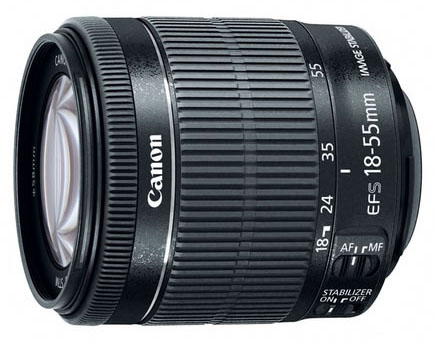 Category: Travel/portrait
Category: Travel/portrait
35mm equivalent: 28.8-88mm
Weight: 7.2 oz.
What we like: Only $100 in many Canon kits.
What we don’t: Image quality is mediocre overall.
The 18-55mm f/3.5-5.6 STM is perhaps the most commonly used EF-S lens—it’s offered in kits with most entry-level and mid-range Canon DSLRs. For $100 more than the camera body—the common price adjustment for the kits—we are fine with this lens. It will get you out the door and shooting with decent sharpness, good autofocus, solid video performance, and a better build than past 18-55mm versions.
Our main concern is that the 18-55mm f/3.5-5.6 doesn’t stand out in any particular way. The focal length range is limited and doesn’t offer as much versatility as other zoom lenses on this list (the 18-135mm STM above is a much more complete kit option, for example). Distortion is noticeable and low light performance is merely on par with other inexpensive zooms. All in all, the 18-55mm STM is an okay option as a part of a kit, and particularly if you’re on a tight budget (you can capture quality photos with any lens). But discerning photographers should look elsewhere.
See the Canon 18-55mm f/3.5-5.6 IS STM
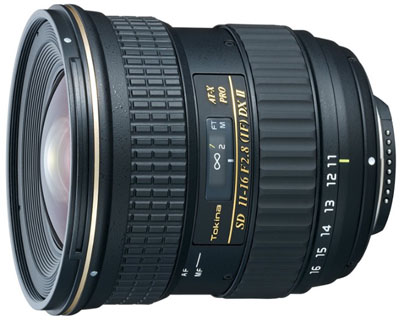 Category: Wide angle
Category: Wide angle
35mm equivalent: 17.6-25.6mm
Weight: 19.8 oz.
What we like: The fastest wide-angle zoom on this list.
What we don’t: Distortion and limited zoom range.
The Tokina 11-16mm f/2.8 is an interesting alternative to the other wide-angle zooms for EF-S. Most impressive is its low-light performance at f/2.8—the Tokina is faster than anything from Canon or Sigma by at least two thirds of a stop. It’s also surprisingly sharp and well built, despite the sub-$400 price.
There are a few reasons why we don’t we have the Tokina 11-16mm ranked higher. The first is distortion, which is heaviest at the wide end but noticeable through 16mm. In addition, we don’t love the nearly 20-ounce weight of this lens, which makes it somewhat burdensome to carry. Finally, the focal length range is smaller than other wide-angle lenses on this list. But if speed is a high priority, give the Tokina a serious look.
See the Tokina 11-16mm f/2.8 for Canon
| Lens | Price | Category | 35mm Equiv. | Weight | Aperture | Filter |
|---|---|---|---|---|---|---|
| Sigma 17-50mm f/2.8 | $306 | Travel/portrait | 27.2-80mm | 19.9 oz. | f/2.8 | 77mm |
| Canon 24mm f/2.8 STM | $99 | Street/travel | 38.4mm | 4.4 oz. | f/2.8 | 52mm |
| Canon 10-18mm f/4.5-5.6 IS STM | $249 | Wide angle | 16-28.8mm | 8.5 oz. | f/4.5-5.6 | 67mm |
| Canon 50mm f/1.8 STM | $125 | Portrait | 80mm | 4.6 oz. | f/1.8 | 49mm |
| Canon 55-250mm f/4-5.6 IS STM | $299 | Telephoto | 88-400mm | 13.3 oz. | f/4-5.6 | 58mm |
| Canon 18-135mm f/3.5-5.6 IS USM | $599 | Travel/portrait | 28.8-216mm | 18.2 oz. | f/3.5-5.6 | 67mm |
| Canon 17-55mm f/2.8 IS USM | $549 | Travel/portrait | 27.2-88mm | 22.4 oz. | f/2.8 | 77mm |
| Sigma 10-20mm f/3.5 | $329 | Wide angle | 16-32mm | 18.3 oz. | f/3.5 | 82mm |
| Canon 60mm f/2.8 Macro USM | $349 | Macro | 96mm | 11.8 oz. | f/2.8 | 52mm |
| Tamron 16-300mm f/3.5-6.3 | $629 | All-in-one | 25.6-480mm | 19 oz. | f/3.5-6.3 | 67mm |
| Canon 15-85mm f/3.5-5.6 IS USM | $799 | Travel/portrait | 24-136mm | 20.3 oz. | f/3.5-5.6 | 72mm |
| Canon 10-22mm f/3.5-4.5 USM | $399 | Wide angle | 16-35.2mm | 13.6 oz. | f/3.5-4.5 | 77mm |
| Canon 18-200mm f/3.5-5.6 IS | $699 | All-in-one | 28.8-300mm | 21 oz. | f/3.5-5.6 | 72mm |
| Canon 18-55mm f/3.5-5.6 IS STM | $249 | Travel/portrait | 28.8-88mm | 7.2 oz. | f/3.5-5.6 | 58mm |
| Tokina 11-16mm f/2.8 | $388 | Wide angle | 17.6-25.6mm | 19.8 oz. | f/2.8 | 77mm |
Throughout this article we frequently reference focal length equivalent, or crop factor. Canon APS-C cameras have a 1.6x crop factor, meaning that a 50mm EF-S lens will behave like an 80mm lens would on a 35mm camera. The history behind crop factor is long, but what you need to know is that lens focal lengths are described using 35mm film as the reference point. Because the image sensor on Canon APS-C cameras is 1.6 times smaller than a 35mm camera, you multiply the listed focal length of the lens by 1.6 to determine its equivalent.
If you’ve used a full-frame camera or know the focal lengths, crop factor can be very helpful in choosing your EF-S lenses. For example, the Canon 10-22mm wide-angle lens is equivalent to 16-35mm on an APS-C camera, which actually is much more useful than the listed range. And the Tamron 16-300mm has a whopping 480mm of reach on your crop sensor camera. For clarity and ease of comparison, we’ve included 35mm focal length equivalent both in the product specs and table.
Every lens buyer faces the tough decision of zoom vs. prime. In general, prime lenses are faster, lighter, and have less distortion, but zooms are much more versatile by covering a range of focal lengths. It’s worth noting that the quality of zoom lenses continues to improve and even the Canon kit lenses are much better optically than in years past. In addition, new Canon digital SLRs have features like built-in distortion correction that make purchasing a zoom more attractive.

Most people buying a Canon APS-C camera at least consider one of the kit zooms like the 18-55mm and 18-135mm. Those lenses are good values when purchased with the camera body, but we recommend adding a specialty zoom or prime whenever possible. And you don’t have to spend big for a fast prime either: both the 24mm f/2.8 and 50mm f/1.8 are just over $100, for example. There just is no replacement for the low light performance, bokeh, and overall image quality of a premium lens.
When comparing Canon EF-S lenses, you’ll notice letter groupings listed after the aperture, which represent the type of focusing motor. Ultrasonic motor (USM) lenses generally are fast and accurate for still photography but were designed back when video wasn’t as popular. Hence, they have a tendency to hunt and are louder when focusing than video shooters prefer. STM (stepping motor) lenses are newer and boast smooth and silent video. Nano USM (or IS USM) is Canon’s new focusing motor and is said to combine the best traits of each. It focuses quickly for stills but is smooth and relatively quiet for video. Currently, the only Nano USM lens on the EF-S market is the Canon 18-135mm f/3.5-5.6, which is offered in a kit with the 80D.
If you shoot video, it’s worth buying an STM lens and that’s the direction that Canon is moving of late. STM lenses still perform well for still photography, and the new Nano USM is an exciting development that we expect to see more of in the future.
One of the key specs that we provide for each lens in this article is weight. Simply put, you’re going to be carrying the lens for extended periods either around your neck or in your camera bag, and weight definitely makes a difference over time. For certain uses like landscape photography where you may be hiking deep into the backcountry, the weight of a camera and lens can become a top priority.

Most prime lenses are lighter than zoom lenses, weighing as little as 4.4 ounces for a pancake-style lens like the Canon 24mm f/2.8 STM. Certain zooms, and telephoto lenses in particular, can creep over 20 ounces plus a lot of bulk. It’s worth noting that faster zoom lenses tend to be heavier as the optical complexity requires more internal components.
You’ll notice that the majority of lenses on this list are manufactured by Canon. First and foremost, Canon offers the widest variety of EF-S lenses by far and has being expanding its native offerings for decades. Second, Canon lenses generally perform best, and particularly in terms of autofocus speed and accuracy (third-party lenses often are made for multiple mounts and therefore aren’t as exacting). Third, it’s tough to beat Canon build quality. Many third-party lens manufacturers try to undercut Canon in price and sometimes cut corners with materials in the process.
With all of that said, we do have 4 third-party lenses on this list and all are viable options. Sigma in particular has been making serious pushes in both the crop sensor and full frame markets, and you often can find Sigma lenses with faster maximum apertures at lower price points than Canon. Tokina is another contender and we even prefer their 16-300mm all-in-one lens over the Canon 18-200mm. Whatever brand of lens you choose, make sure to do your research (or read ours).
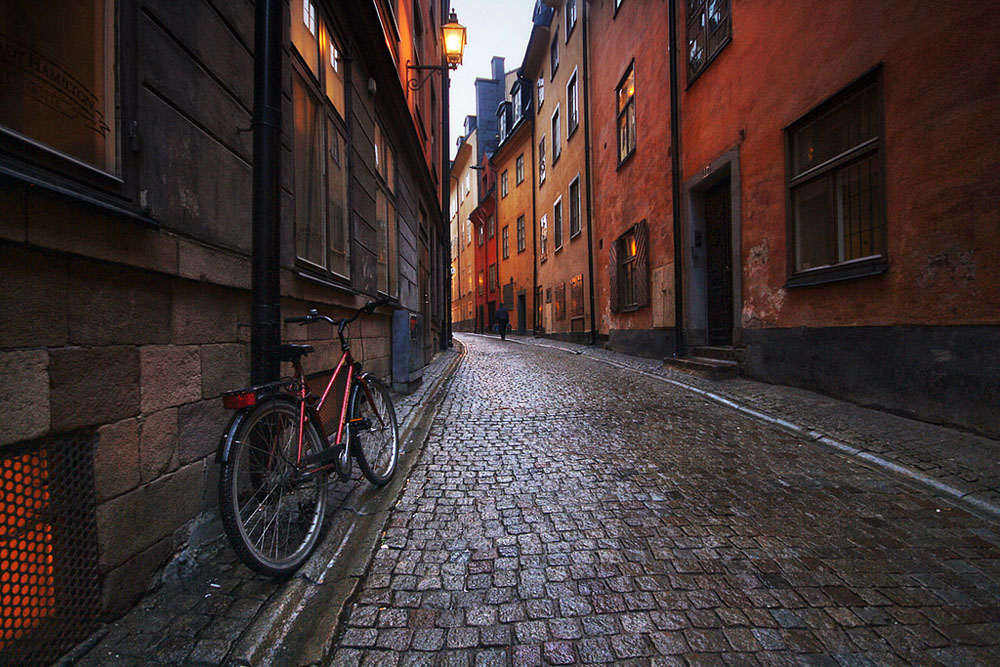
Canon has two lens types for its digital SLRs: EF-S (compatible only with APS-C or crop sensor cameras) and EF (compatible with full frame and crop sensor cameras). To be clear, EF-S lenses cannot be used on full-frame cameras, but most EF lenses can be used on crop sensor cameras. The major downsides of going this route are that full-frame lenses cost considerably more than their EF-S counterparts and you won’t be maximizing the optical capability (only the center portion of the lens will be in use). Along with the added weight of a full-frame lens, the value certainly is questionable on a crop sensor camera. Feel free to use existing EF lenses on your EF-S camera, but we recommend against buying them for that purpose.
This article exclusively covers EF-S lenses for Canon’s crop sensor DSLRs, but we’ve also created a full article on Canon’s EF (full-frame) lens offerings. These lenses are an expensive bunch, but so are full-frame cameras and it’s a different group of photographers that are willing to spend big bucks for top-tier equipment. Again, we don’t recommend buying EF lenses specifically for your EF-S camera due to their cost and weight, but technically they are compatible.
Back to Our Canon EF-S Lens Picks Back to Our Lens Buying Advice